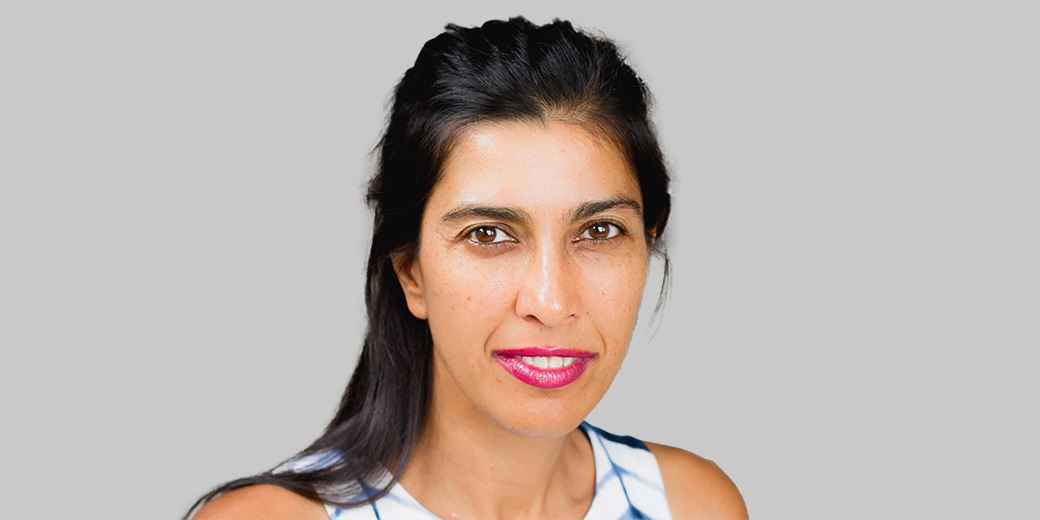There might be light at the end of the tunnel, but it ain’t here yet.
‘If you’re waiting for committees to make decisions, you’re woefully out of touch’

Latest Newsletter
Value stance rewards managers with first AAA rating
The year comes to a close with a host of managers gaining their AAA wings.
Real Life: A cheaper, smarter way to fly business to the US
Companies are clamping down on travel costs. Here’s how to travel in comfort while keeping the expenses department happy.
Community
Nazmeera Moola, Ninety One, chief sustainability officer
CV
2021–present: Ninety One, chief sustainability officer
2018–2021: Investec Asset Management/Ninety One, Head of SA investments
2013–2018: Investec Asset Management, Co-head of Africa fixed income
2007–2013: Macquarie Group, Associate director
2000–2006: Bank of America Merrill Lynch, Economist
A cursory search of Citywire’s industry job-move coverage over the past 12 months would show a clear trend for senior ESG appointments. Among them is Nazmeera Moola, named chief sustainability officer at Ninety One last November.
While some of her peers will have SRI long written into their CVs, others have made a transition. Moola is in the latter camp, having thrashed out the viability of the role with her CIO over several weeks, she tells Amplify.
The question is how such a role becomes effective. What is its purpose and how does the structure of the business support those aims? To use her term: how are sustainability ambitions operationalised? Moola explains how she has drawn on her career background, how (not) to use committees, and the importance of choosing the right goal.
What was your journey to this role?
I started my career working in the economics team at Merrill Lynch, straight out of university. An economics background is quite useful for sustainability: you’re used to thinking about how systems work and how policy interacts with real-world outcomes.
I moved to Investec Asset Management in 2013. One of the funds I was responsible for was the Emerging Africa Infrastructure fund. I was deeply involved for about four years. It has a very explicit dual financial impact objective.
I found myself often leading on engagement. And I started looking quite seriously at the energy transition in South Africa, then other emerging markets, like Indonesia and India.
Then, last year, Hendrik [du Toit, Ninety One’s CEO] said: ‘Nazmeera, we want someone who has deep knowledge of our investment teams to take on this role and lead this, and we think you’d be good for the role.’ It felt like a natural step.
Before Ninety One demerged from Investec, there was an ESG team that reported to the investment governance committee. Now there are more committees and more integration.
You should not be bringing brand new things to committees and expect the presenter to make the decision. If that’s where you are, you’re woefully out of touch with the organisation.
If this role succeeds, it’s because it’s deeply integrated into the organisation, and particularly into the investment teams. The sustainability committee, which I chair, has our CEO on it, our co-CIOs, our chief commercial officer and our head of investment risk on it. I am now operating that as primarily an information-sharing space and for ratification of decisions.
The investment risk committee is where your ESG risks will surface. But the work happens in the teams.
Part of the governance system is the board’s social sustainability and ethics committee. That’s important. It makes sure the vision in the business is completely aligned, and the board knows how we’re operationalising it.
I report to our CEO and one of our CIOs, John McNab. I sit six feet from John in Cape Town. He and I talk three times a day, normally. When I’m in London, Hendrik’s at my desk or I’m at his desk once a day. It’s a constant conversation. It’s not about waiting for the committee.
How are you staying on top of it all?
Before I agreed to take this job last year, I spent some time with Hendrik and John McNab agreeing what my priorities would be. I’ve perfected a little mini chocolate torte recipe over several weeks of having tea with John regularly. We’d critique the chocolate tortes and we’d then perfect the role in the same process. By the time I’d said yes, I had a very clear idea of what my priorities were for this year.
We’ve had until June this year to agree on our net-zero targets. The targets will not be about decarbonisation in the early years. It’s going to be about working with our companies, particularly our high-emitters, to make sure they have 1.5 degree-aligned plans.
We have 1,200 holdings across our corporate book, corporate equity and debt. Guess how many companies account for half of our emissions? Twenty-three!
These are big energy companies?
Some will surprise you. Samsung is on the list. Its emissions include Scope 3 emissions [see below]. Producing semiconductor chips is very electricity-intensive, and Korea’s electricity grid is not particularly green. So you are going to have relatively high amounts of emissions.
Scope 1 is what comes out of a chimney; 2 is what is produced in the electricity that you use; 3 is everything else – all the customers and all the suppliers of stuff downstream. If you don’t use all three, the oil companies and auto companies can quickly look absolutely fine.
It came across from the Citywire CEO Summit, in which Hendrik participated, that the transition is the priority. Exclusion won’t help companies achieve transition and investors certainly won’t benefit.
That’s exactly the view. The biggest thing has been identifying these high-emitters. Many of them are held by more than one team at Ninety One. We work out between them what the engagement plan is, and who’s going to be the lead.
We’ve developed in-house frameworks for assessing carbon transition plans, which look across three pillars: the ambition of the transition plans, the quality of the plan in terms of costing, budgeting, capex, etc, and then implementation.
We have this list of the 23 highest emitters across the house. A manager might own three or four of them. But it’s about identifying who is best placed to lead the engagement in our business. In some cases, I will get involved. But, for example, the portfolio manager of our natural resources fund used to run a copper division for one of the major miners. He is ideally placed to be the lead with some of those miners.
Have you been involved in any fund launches or mandate changes?
We have a two-step process for Article 8 (enhanced integration) and 9 (sustainable strategies) fund launches. First, we have a peer review committee, which I chair. It contains portfolio managers from our various teams who have a strong focus on sustainability. Then we have a more formal process called structured report-back (SRB), which involves our co-CIOs, and our head of investment risk. I’m part of any SRB with a sustainability focus.
Do you have a target for moving funds into sustainable strategies?
We’re only going to develop new strategies or transition strategies where there’s integrity and substance. For existing strategies, investors expect financial returns. If you’re going to evolve it, you can’t be sacrificing that, because that’s what you sold. We’ve set a hurdle that we think is appropriate, and we have this two-step process: the peer review and SRB. We’ve had strategies that have gone through that process, where we’ve said: ‘You’re not ready. It doesn’t qualify, in terms of evolution.’
Latest Newsletter
Amplify Issue 30: The fund groups topping the tree
We analyse which groups have had the biggest inflows and outflows in 2022, look at managers achieving their first AAA ratings, and hear from Rob Kyprianou on why regulation gets it back to front.
Amplify Issue 29: Red hot: 2022’s private market hiring spree
2022 has been a hot year for private markets, but are asset managers putting the brakes on their expansion efforts? Plus, we look at how the bear market has affected launches this year and look at how firms can better communicate their brand values.
Amplify Issue 28: Fill your ESG product gaps
We hear from fund buyers on what they’re looking for from an ESG fund, find out what Neuberger Berman is plotting in the alts world, and learn the winners of Citywire’s Gender Diversity Awards.
Community
